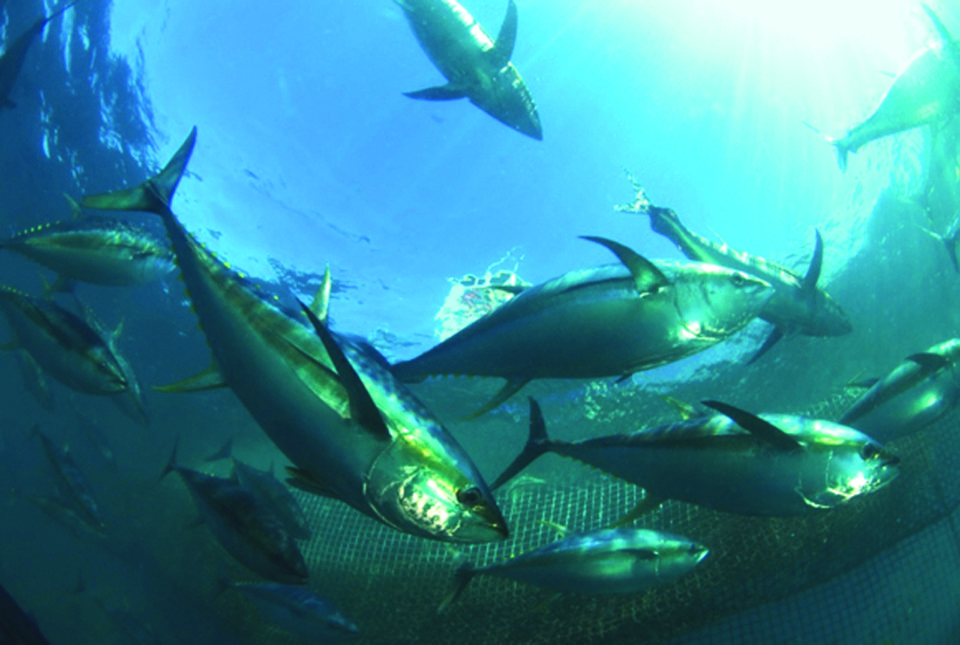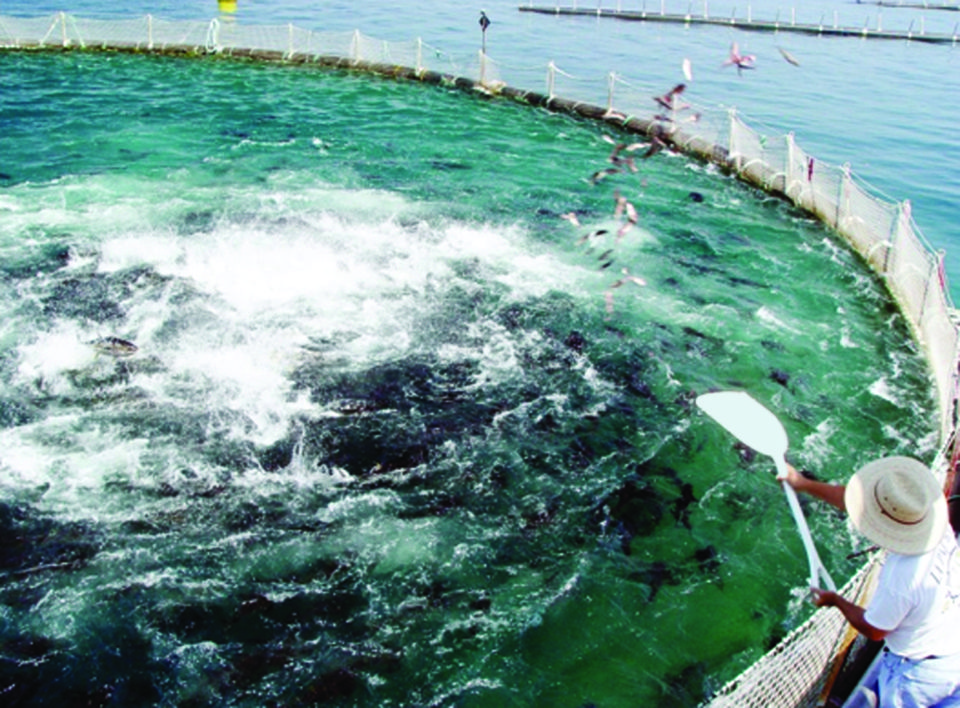Amberjack, yellowtail farming developing

Mexico has a wide diversity of areas and water temperature ranges that are optimal for a variety of aquaculture species. The northern Pacific area of Ensenada to Cedros Islands can host a multitude of temperate and cold-water species. For warm-water species, there are the tropics that stretch along the Pacific and into the Sea of Cortez, declared by Jacques Cousteau as the aquarium of the world. And, of course, there is the entire Atlantic Ocean/Gulf of Mexico side of the country, which hosts exclusively tropical species from Belize to the Gulf of Mexico.
Despite its potential, marine aquaculture has been slow to evolve beyond the shrimp-farming industry in Mexico. Many foreigners have tested the waters but been unable to complete their aquaculture dreams for various reasons.
Now, however, Mexico is a much different country than it was even 15 years ago. With its ample natural resources and the support the government is providing aquaculture developers, the country offers growing opportunities for the farming of finfish and other species.
Rancheros Del Mar
Rancheros del Mar, a multifaceted farm operation in Mexico’s Baja California, is an example of a pioneering aquaculture company based in Mexico. It was the first company to ranch yellowfin tuna (Thunnus albacares) but due to diminishing wild stocks for yellowfin tuna and production obstacles related to loss of flesh color in a captive environment, Rancheros del Mar is focusing on closed-cycle production of longfin amberjack (Seriola rivolian). It recently completed a two-year pilot grow-out of longfin amberjack at its Mexican ocean site with excellent results.
The company now has spawning broodstock animals and is completing a hatchery renovation. The hatchery is expected to be in full production by March 2011, at which time it will sell amberjack juveniles to other aquaculture companies.
Yellowfin tuna production from eggs may also be a future consideration, should investment and interest warrant it. The company has previously held yellowfin broodstock and had them spawn. It also sells geoduck clam seed and will be starting production of sea cucumbers destined for Chinese markets. The sea cucumbers will be raised below the amberjack cages as an autotrophic mechanism.
Government support
For the most part, the Mexican government has been very cooperative and helpful with projects. Although there are occasional bureaucratic delays in permitting, Mexico’s aquaculture and fisheries agency, CONAPESCA, has responded to all of Rancheros del Mar’s permitting requests and is encouraging the development of amberjack, yellowtail and other aquaculture as a high priority for the country.
The secretary of Mexico’s Ministry of Agriculture, Livestock, Rural Development, Fisheries and Food (SAGARPA) has met with the author and kept in contact. Rancheros del Mar has also met with the commissioner of fisheries and aquaculture, and other officials – all of whom have been very supportive of its projects.

Industry potential
As far as finfish aquaculture in general is concerned, Mexico is poised to develop a very strong industry in the near future, and the Mexican government is doing its job to see that this comes about sooner rather than later.
Logistically, Mexico is very close to the United States and Canada, and both countries are large seafood consumers. It has a gateway to Japan through Los Angeles and trade agreements with Spain and other countries, which also opens up European market channels. With a large population and buyers who can pay for premium-quality fish, Mexico itself is a significant seafood market.
Issues, opportunity
Several factors have caused aquaculture development to delay in Mexico. The absence of hatcheries and a previous lack of interest to invest in them are two. The global economic crisis has not helped either, as companies have been trying to raise sufficient capital to complete goals.
An equally large stumbling block has been the difficulty in convincing international investors that Mexico is a safe place to invest their money. If it was not safe, Rancheros del Mar and thousands of other international companies would not be continuing their efforts there. As a matter of fact, the author sees Mexico as a land of opportunity with friendly people open to those who wish to partake in their business world.
The fact that Mexico is a North American Free Trade Agreement country next door to the U.S. makes it an opportune location for aquaculture production. For those who really understand the dynamics of the country, it is easy to see that Mexico holds a great future as an aquaculture producing nation.
(Editor’s Note: This article was originally published in the January/February 2011 print edition of the Global Aquaculture Advocate.)
Author
-
Terry Morris
Rancheros del Mar S.A. de C.V.
Carretera Pichilingue, Kilometro 2.5 L-13
Marina Palmira, La Paz, Baja, California Sur
Mexico, C.P. 23000
Tagged With
Related Posts

Intelligence
A motive, and a market, for farmed fish in Mexico
Boasting ample areas for aquaculture and a robust domestic demand for seafood – not to mention its close proximity to the U.S. market – a land of opportunity lies in Mexico. Fish farming is primed to meet its potential south of the border.

Health & Welfare
A study of Zoea-2 Syndrome in hatcheries in India, part 1
Indian shrimp hatcheries have experienced larval mortality in the zoea-2 stage, with molt deterioration and resulting in heavy mortality. Authors investigated the problem holistically.

Responsibility
Addressing safety in Latin America’s tilapia supply chain
Over the last decade, the experience gained by many tilapia farmers combined with proficient programs implemented by local governments have significantly improved tilapia production in various Latin American countries like Colombia, Mexico, Ecuador and other important tilapia producers in the region.

Responsibility
Ailing waterways hail the oyster’s return
The Lower Hudson Estuary and Chesapeake Bay, two waterways once home to thriving oyster beds, would welcome the shellfish’s return. Aquaculture initiatives in both areas aim to reinvigorate the water and the communities they support.


